冬奥会与中国文化的浪漫约会
李振阳
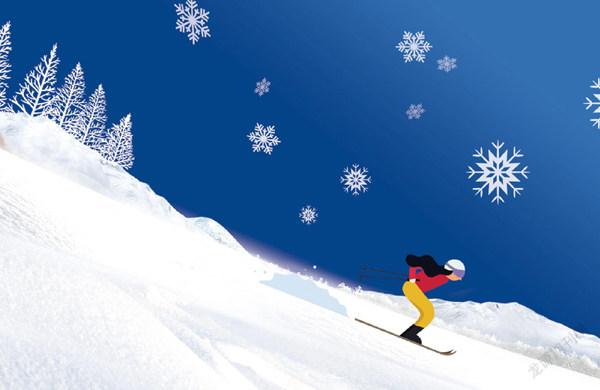

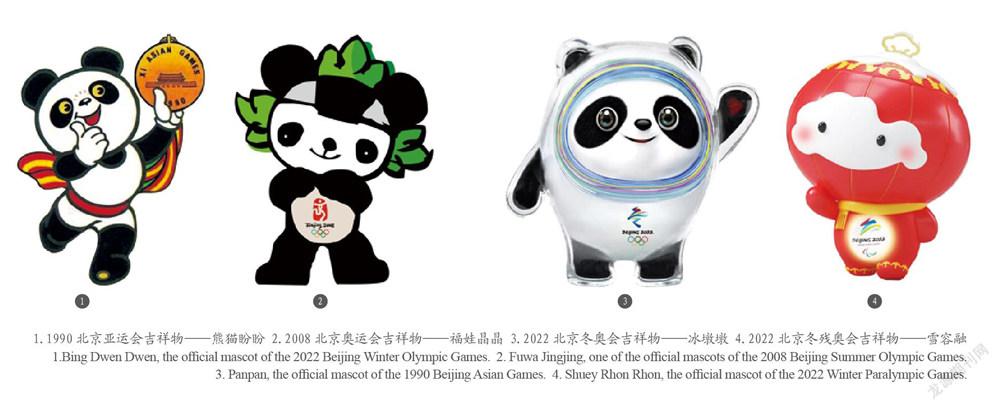

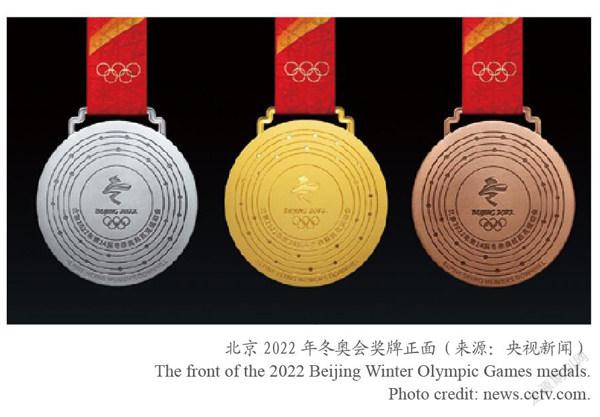
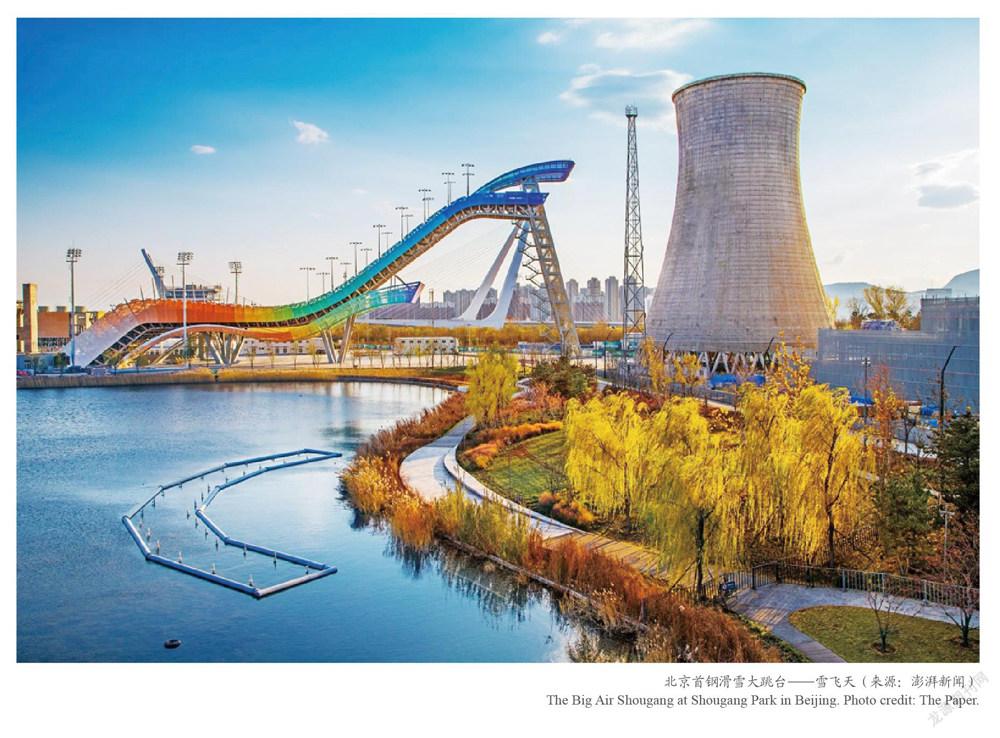

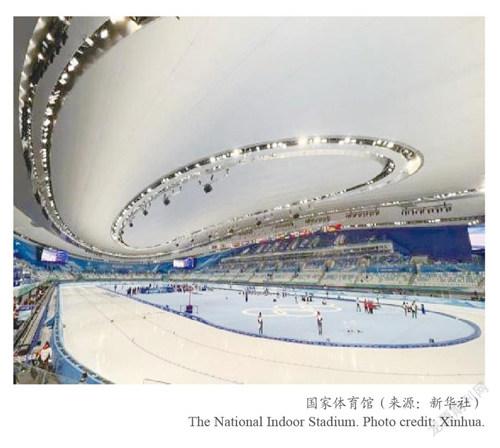
“一九二九不出手,三九四九冰上走,五九六九沿河看柳,七九河开,八九燕来,九九加一九耕牛遍地走。”
這首“数九”歌谣,在中国民间广为流传,描绘了从“窗含西岭千秋雪,门泊东吴万里船”到“碧玉妆成一树高,万条垂下绿丝绦”的景致变迁。在孩子们一声声的吟唱中,春天翩然而至。
2022年初的这个冬天,华夏大地上“数九”歌谣依旧唱响,大家却多了一份新的期待。在北京这个奥林匹克历史上的首个“双奥之城”,无处不在的奥运元素里,每个精心安放的细节,都蕴含着关于“更快、更高、更强——更团结”的奥林匹克精神,以及传承、包容、融合的东方情感。
传情、达意,或外放或含蓄,中国传统文学都是极佳的载体。在“诗”“词”“歌”“赋”里,有中国人独有的奥运浪漫。
动感之诗
还记得2008年北京奥运会会徽“舞动的北京”吗?篆刻艺术将汉字独有的魅力展现无遗。北京冬奥会和冬残奥会体育图标再次选用了这种艺术形式,与“舞动的北京”在理念上一脉相承。有所不同的是,这次的设计更偏重“汉印”的风格。浑厚古朴、大气持重,又不失灵动多姿。
30个项目(包括24个北京冬奥会项目和6个北京冬残奥会项目),30个“小红人”在方寸之间舞动,人物线条蕴含着中国传统书法的笔意神韵,寓动于静,将冬奥会和冬残奥会各个项目最精彩的瞬间定格。图标底色也是大家熟悉的“霞光红”,是印泥的颜色,契合着印章文化,也象征着日出东方的热情。
书法艺术的感染力,也在本届冬奥会和冬残奥会会徽的设计上得到彰显。北京冬奥会会徽名为“冬梦”,灵感来自汉字“冬”。会徽设计分上下两部分,意象不同却又完美融合。上半部分,是一位滑冰运动员正在冰面上极速前行,下半部分展现的是一位滑雪运动员破风而动的英姿。而北京冬残奥会会徽则让人感受到汉字“飞”的灵动。图形由汉字巧妙地幻化成一个向前滑行、冲向胜利的运动员,同时形象地表达了轮椅等冬残奥会特殊运动器械的形态。
融合之词
北京冬奥吉祥物“冰墩墩”和“雪容融”,大概是冬奥会期间除运动员外“出镜率”最高的形象之一了。“冰墩墩”是一只天真、可爱的熊猫。冰,象征纯洁、坚强,是冬奥会的特点。墩墩,意喻敦厚、健康、活泼、可爱,契合熊猫的整体形象,象征着冬奥会运动员强壮的身体、坚韧的意志和鼓舞人心的奥林匹克精神。
中国国宝熊猫,在全球辨识度极高,其可爱、敦厚的形象也广为全球年轻人接受。这无法不让人想起2008年北京奥运会吉祥物之一的福娃“晶晶”,以及1990年同样是在北京举办的第11届亚运会吉祥物“盼盼”。从“盼盼”,到“晶晶”,再到“冰墩墩”,这是一段跨越30多年的时代交接,是几代人的集体记忆,更向全世界展现了新时代中国一以贯之、昂扬奋进的精神风貌。
冬残奥会吉祥物“雪容融”,是个可爱的“灯笼宝宝”。本届冬奥会恰逢新春佳节,节庆意味浓厚的红灯笼成了设计灵感来源。一种广为流传的说法是,灯笼在中国有两千多年的历史,元宵节打灯笼的习俗可以追溯到东汉时期。灯笼,代表着收获、喜庆、温暖和光明。“雪容融”顶部的如意造型象征吉祥幸福,和平鸽和天坛构成的连续图案,寓意着和平、友谊,装饰图案还融入了中国传统剪纸艺术,而脸上的雪块代表着“瑞雪兆丰年”的寓意。
雪,象征着洁白、纯洁,代表着冰雪运动。容,意为包容、宽容。融,意为融合、融洽。“雪容融”的名字里,包含着开放、交流的理念。通过冬奥会,各个国家作为人类命运共同体的组成部分,应当联结得更为紧密,互知互通。唇齿相依、共存共生,这是“雪容融”中蕴含的东方哲思。
“苍璧礼天,黄琮礼地。”本届冬奥会奖牌的设计灵感,来源于玉琮和玉璧。以河南安阳殷墟妇好墓出土的五弦玉璧为视觉来源,参考广州南越王墓同心圆玉璧等为灵感,将外围圆环,设计成五弦造型,弦纹之间做打凹处理,取自传统五弦玉璧的意象,与2008年奥运会奖牌“金镶玉”的玉璧形制奖牌相呼应。奖牌正面有五环,五环同心,同心归圆,寓意“天地合 · 人心同”,并刻有祥云纹和冰雪纹,中心是奥林匹克五环标志;背面中心刻有北京冬奥会会徽,四周环绕24个点及运动弧线,象征着北京冬奥会上运动员如群星璀璨,创造精彩。
冰与火之歌
2021年10月18日,北京冬奥会火种在奥林匹克运动的发祥地——希腊伯罗奔尼撒半岛的古奥林匹亚采集成功。这一刻,冰与火相遇,在瑰丽的中华文化映衬下,演奏出华丽的乐章。
从希腊采集的火种,储存在火种灯内,被精心护送至北京。本届冬奥会火种灯通体“中国红”,飞舞的丝带环绕在顶部,象征着拼搏的奥运激情。火种灯的创意灵感,来自大名鼎鼎的西汉长信宫灯。“长信”,是指永恒的信念,寄寓着人们对光明和希望的追求。
长信宫灯出土于本届冬奥会赛区之一的河北。它1968年从河北省保定市满城的中山靖王刘胜之妻窦绾墓中出土,现收藏于河北博物院。作为汉诸侯王、后一级的大型崖洞墓,满城汉墓的发掘创造了数项考古学之最,充分反映出西汉盛世时期的壮丽风貌。
长信宫灯通体鎏金,灿烂而华丽,虽然漫长的岁月在灯的外表留下了斑斑锈迹,但仍体现出汉代鎏金工艺的高超水平。长信宫灯通高48厘米,整体造型为一名跪地持灯的汉代宫女形象。宫女左手执灯,右臂高高举起,宽大的袖管自然下垂,巧妙地形成了灯罩的顶部。长信宫灯最神奇之处,在于其精巧的导烟设计。在汉代,人们多用动物油脂作为照明燃料,容易产生大量的灰烬。长信宫灯宫女铜像体内中空,燃烧产生的灰尘可以通过宫女的右臂沉积在灯体内部,不会大量散发到周围空气中。
古人的环保理念,在当下得到了传承。冬奥会火种台采用无烟无毒的陶瓷涂料,燃料也选用清洁能源丙烷。火种台的设计理念,来源于古代传统青铜礼器——尊,尊的著名文物有四羊方尊、妇好鴞尊等,表达了敬重、庄重之意。
承载本届冬奥会最具“仪式感”环节的,非火炬莫属。火炬名为“飞扬”,外形像一条飞舞的丝带,旋转上升,最后幻化为舞动的火焰。外观上,“飞扬”与北京2008年奥运会开幕式主火炬塔遥相呼应,体现了“双奥之城”的传承与发扬。仔细观察的话,冬奥会火炬还有令人惊喜的细节。下部所装饰的,是寓意着吉祥的祥云,逐渐过渡到剪纸风格的雪花图案。从祥云到雪花,也是对2008年北京奥运会的致敬。
榮耀之赋
建筑,是凝固的时间。本届冬奥会12个竞赛场馆,不仅是运动员争金夺银、加冕荣耀的圣地,更是中国的能工巧匠把奥运华彩永远留住、写给全世界的一封钢筋混凝土的中式情书。
国家跳台滑雪中心位于张家口赛区,这是我国第一个跳台滑雪场地,也是世界上首个在顶部出发区设置大型建筑物的跳台滑雪场地。从空中俯瞰,跳台线条和中国传统吉祥配饰“如意”相吻合,因此这里有一个唯美的名字——“雪如意”。试想一下,运动员们从高台下滑、加速,继而腾空而起,在空中像鸟儿一样自由。人类自古以来飞翔的梦想,运动员们站到最高领奖台的梦想,在这一刻同时实现。这正是——“如意,如意,随我心意。”
在北京首钢园区群明湖畔,四座巨大冷却塔之前,有一座看起来像是敦煌壁画“飞天”飘带的建筑。这就是首钢滑雪大跳台,也被称为“雪飞天”。单板和自由式滑雪大跳台项目的选手们在这里驾驭冰雪,一飞冲天。
感受一下其他奥运场馆的中式浪漫之名:国家速滑馆“冰丝带”、国家体育馆“冰之帆”、国家雪车雪橇中心“雪游龙”,“水立方”幻化成“冰立方”……
冬去春来,山花烂漫。这一场和冰雪的约会终有归期,而与奥运精神相融、难分你我的中国式浪漫,将随着运动员、裁判员的亲身体验走遍全世界,走向更久远的未来。正如本届冬奥会主题口号说的那样——
“一起向未来。”
“Together for a Shared Future. ”
Winter Olympics and Traditional Chinese Culture: A Romantic Date in the Cold Days
By Li Zhenyang
“In the first and second nine-day periods, please do not stick out your hands; in the third and fourth nine-day periods, people can walk on ice; in the fifth and sixth nine-day periods, willows along the banks are sprouting new leaves; in the seventh nine-day period, rivers are flowing; in the eighth nine-day period, swallows are returning; and nine days after the ninth nine-day period, cattle are walking all over the field.”
The ”Nines of Winter”, as the folk song is popularly known in China, refers to the nine nine-day periods starting on the Winter Solstice and describes the changes of landscape from winter to spring. While the ”Nines of Winter” is still being sung all over China in the winter of 2022, everyone is also looking forward to the 2022 Beijing Winter Olympic and Paralympic Games, as Beijing became the first city ever to host both the Summer and Winter Games in the history of Olympics. In the “Dual Olympic City”, the Olympic spirit of “faster, higher, stronger — together” can be seen everywhere and in every carefully crafted detail.
Do you still remember “Dancing Beijing”, the official emblem of 2008 Beijing Olympic Games? In the emblem, the unique charm of Chinese characters is on full display through the art of seal carving. For the 2022 Beijing Winter Games, the art form has been adopted once again for the design of 30 sports pictograms.
Of the 30 pictograms, 24 identify each of the seven disciplines in the Winter Olympic Games (freestyle skiing and snowboarding have been assigned six and five icons each due to differences in the equipment and courses in these disciplines) and six identify the sports of the 2022 Paralympic Winter Games. In these pictograms, the 30 “little red figures” dancing in the squares have incorporated the art of Chinese calligraphy, each sport freeze-framed at its most exciting moment. The combination of the red background, a commonly used color for the seal paste, and the white strokes highlights the grace and dynamism of winter sports, and shows the passion and enthusiasm for these sports.
The official emblem of the 2022 Beijing Winter Olympics and Paralympics embodies the beauty of calligraphy, too. Entitled “Winter Dream”, the emblem was inspired by冬, the Chinese character for “winter”, combining traditional and modern elements of Chinese culture. The design resembles a skater speeding forwarding at the top and a skier braving the wind at the bottom. In fact, the flowing ribbon-like motif of the emblem reminds people of the Chinese character 飛, or flying, and at the same time vividly depicts the forms of equipment of the Winter Paralympic sports, such as wheelchairs.
In addition to athletes, Bing Dwen Dwen and Shuey Rhon Rhon, the two official mascots of the Beijing Winter Olympics and Paralympics, are probably the most visible characters during the Games. Bing Dwen Dwen is an innocent and lovely panda. “Bing” here refers to “ice”, and it symbolizes purity and strength, while “Dwen Dwen” means robust and lively, and represents children. The mascot embodies the strength and willpower of athletes and helps promote the Olympic spirit.
As China’s national treasure, the panda is highly recognized around the globe and adored by young people everywhere. It brings to mind Fuwa Jingjing, one of the official mascots of the 2008 Beijing Summer Olympic Games and Panpan, the official mascot of the 1990 Beijing Asian Games. From Panpan to Jingjing and to Bing Dwen Dwen, they have been part of the collective memory of several generations spanning over three decades.
Shuey Rhon Rhon, the official mascot of the 2022 Winter Paralympic Games, is a Chinese lantern child, inspired by the Lantern Festival which falls on the 15th day of the first lunar month. The lantern signifies harvest, celebration, brightness and prosperity, and the overall design features elements from traditional Chinese paper cutting and Ruyi ornaments.
“Shuey”, which means snow in Chinese, represents pureness, while the first “Rhon” means inclusiveness and tolerance and the second “Rhon” means integration and harmoniousness. In full, the name of the mascot shows the desire to have greater inclusion for people with impairments throughout society, and more dialogue and understanding among different cultures.
The medals, named “Tong Xin”, meaning “together as one”, are composed of five rings and a center. The design has drawn inspiration from jade cong (tube) and jabe bi (disc), ancient Chinese jade ware. On the front are five concentric circles with the five rings engraved in the center, representing the Olympic spirit to bring people together and the splendor of the Olympic Winter Games being shared all over the world; patterns of lucky clouds, ice and snow are also engraved. On the back is the emblem of the Beijing Winter Games in the center, as well as 24 dots and a series of circles.
The Olympic flame for the Beijing Winter Games was lit on October 18, 2021 at the Temple of Hera in Ancient Olympia, Greece, the site of the ancient Olympic Games. The flame, stored in a special lantern, was carefully flown to Beijing. In the color of “Chinese red”, the Olympic flame lantern is based on the Changxin Palace Lantern, dating back to the Western Han dynasty (206 BC- AD 25). The phrase “Changxin” means “eternal belief”, the embodiment of people’s pursuit of brightness and hope.
Collected at the Hebei Museum, the Changxin Palace Lantern is a bronze relic that was excavated from the tomb of Dou Wan, a Western Han noblewoman, in Mancheng county, Hebei province, in 1968. The Changxin Palace Lantern has a fine and ingenious design. With a height of 48 centimeters, it is shaped as a palace maid in her knees holding a lantern. Smoke from the candle within passes up through the figurine’s sleeves and on into the hollow body, and the holder below can store water, dissolving soot from the smoke. Indeed, the Olympic cauldron, based on ding, ancient Chinese vessels, also adopted environment-friendly materials and fuels.
The torch is the most ceremonial part of the Games. Named “Flying”, it resembles a flowing ribbon, spiraling up and turning into dancing flames. The design of the torch echoes the main cauldron design of the Beijing 2008 Games, which highlights the legacy of the Olympics in the Chinese capital.
Architecture is time that has been frozen. The 12 venues of the Beijing Winter Olympic Games are not only places for athletes to win medals and be crowned with glory, but also a “love letter” of steel and concrete from the Chinese craftsmen and masters to preserve the splendor of the Olympic Games for eternity.
Located in Zhangjiakou city, Hebei province, the co-host city of the 2022 Beijing Winter Olympic Games, the National Ski Jumping Center is the first Olympic-standard alpine ski venue in China and the first permanent ski jumping course in the world. With the longest ski jump trail in the world, the “S-curved” design of the center has earned itself a nickname “Snow Ruyi”, thanks to its resemblance to the shape of a “Ruyi”, a traditional Chinese scepter symbolizing good luck. Just imagine athletes sliding down the high platform, accelerating and then soaring into the air, free as birds. Flying in the air has long been a dream of mankind since ancient times, and standing on the very top of the podium is undoubtedly the dream of every participant — both will be realized at the same time, just as the saying goes: “Ruyi, Ruyi, do as I please.”
In front of four giant cooling towers along the Qunming Lake in Beijing’s Shougang Industrial Park stands a structure that looks like a ribbon from the “Flying Apsaras” on the frescos of the Mogao Grottoes. This is the Shougang ski jumping platform, known as the Big Air, where athletes compete in freestyle skiing and snowboarding.
Then there is the “Ice Ribbon” (Beijing National Speed Skating Oval), the “Ice Fan” (National Indoor Stadium), the “Flying Snow Dragon” (National Sliding Center) … all with a sense of literary beauty.
After winter comes spring. When the Beijing Winter Games come to an end as all parties do, the Chinese-style romance, inextricably linked with the Olympic spirit, will travel all over the world with the athletes, the referees and all the participants. Just as the official motto promises, “Together for a Shared Future.”

